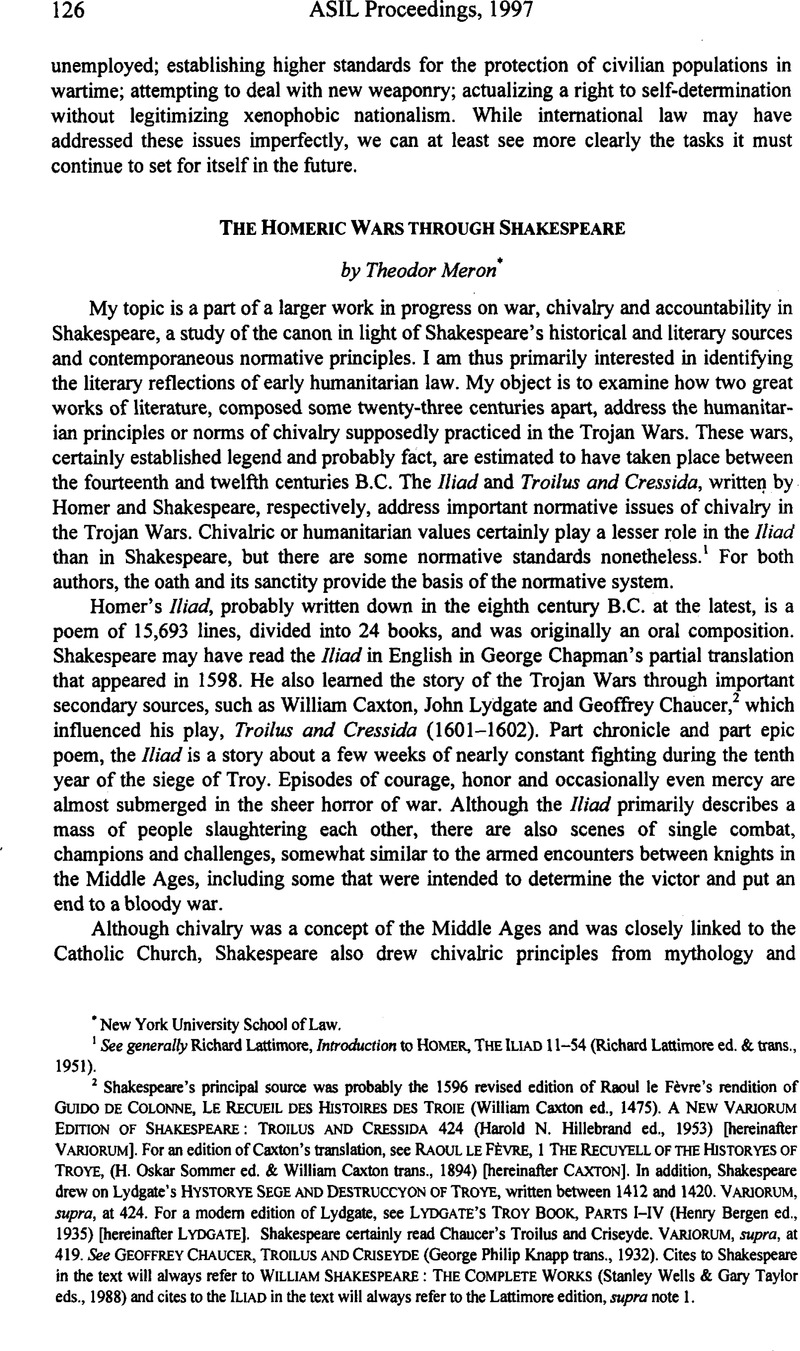No CrossRef data available.
Published online by Cambridge University Press: 28 February 2017

1 See generally Lattimore, Richard, Introduction to HOMER, The Iliad 11-54 (Lattimore, Richard ed. & trans., 1951)Google Scholar.
2 Shakespeare’s principal source was probably the 1596 revised edition of Raoul le Fèvre’s rendition of de Colonne, Guido, le Recueil des Histoires des Troie (Caxton, William ed., 1475)Google Scholar. A New Variorum Edition of Shakespeare: Troilus and Cressida 424 (Hillebrand, Harold N. ed., 1953)Google Scholar [hereinafter Variorum]. For an edition of Caxton’s translation, see le FĖvre, Raoul, 1 The Recuyell of the Historyes of Troye, (Sommer, H. Oskar ed. & Caxton, William trans., 1894)Google Scholar [hereinafter Caxton]. In addition, Shakespeare drew on Lydgate’s Hystorye Sege and Destruccyon of Troye, written between 1412 and 1420. Variorum, supra, at 424. For a modern edition of Lydgate, see Lydgate’s Troy Book, Parts I-IV (Bergen, Henry ed., 1935)Google Scholar [hereinafter Lydgate]. Shakespeare certainly read Chaucer’s Troilus and Criseyde. Variorum, supra, at 419. See Chaucer, Geoffrey, Troilus and Criseyde (Knapp, George Philip trans., 1932)Google Scholar. Cites to Shakespeare in the text will always refer to Shakespeare, William : The Complete Works (Wells, Stanley & Taylor, Gary eds., 1988)Google Scholar and cites to the ILIAD in the text will always refer to the Lattimore edition, supra note 1.
3 Theodor Meron, Henry’s Wars and Shakespeare’s Laws 17-46 (1993).
4 For a discussion of this episode, see id. at 27-32.
5 Compare Military and Paramilitary Activities (Nicar. v. U.S.), 1986 I.C.J. 14, 98 (June 27).
6 Chaucer, supra note 2, at 185.
7 Regarding the granting of quarter under rules of chivalry, see MERON, supra note 3, at 108-11. For a legal discussion of the killing of the French prisoners of war at Agincourt, see id. at 154-171.
8 Variorum, supra note 2, at 425.
9 Caxton, supra note 2, at 434.